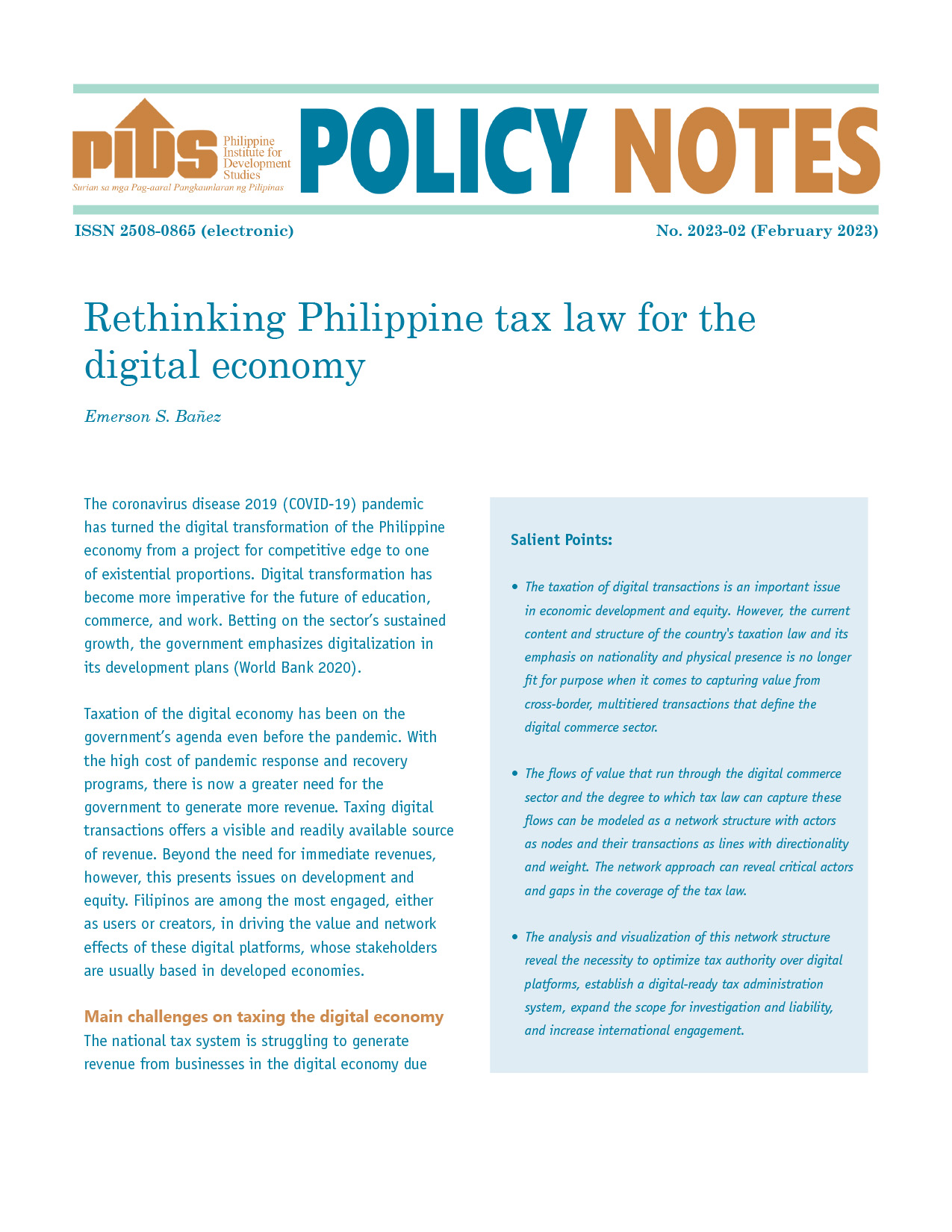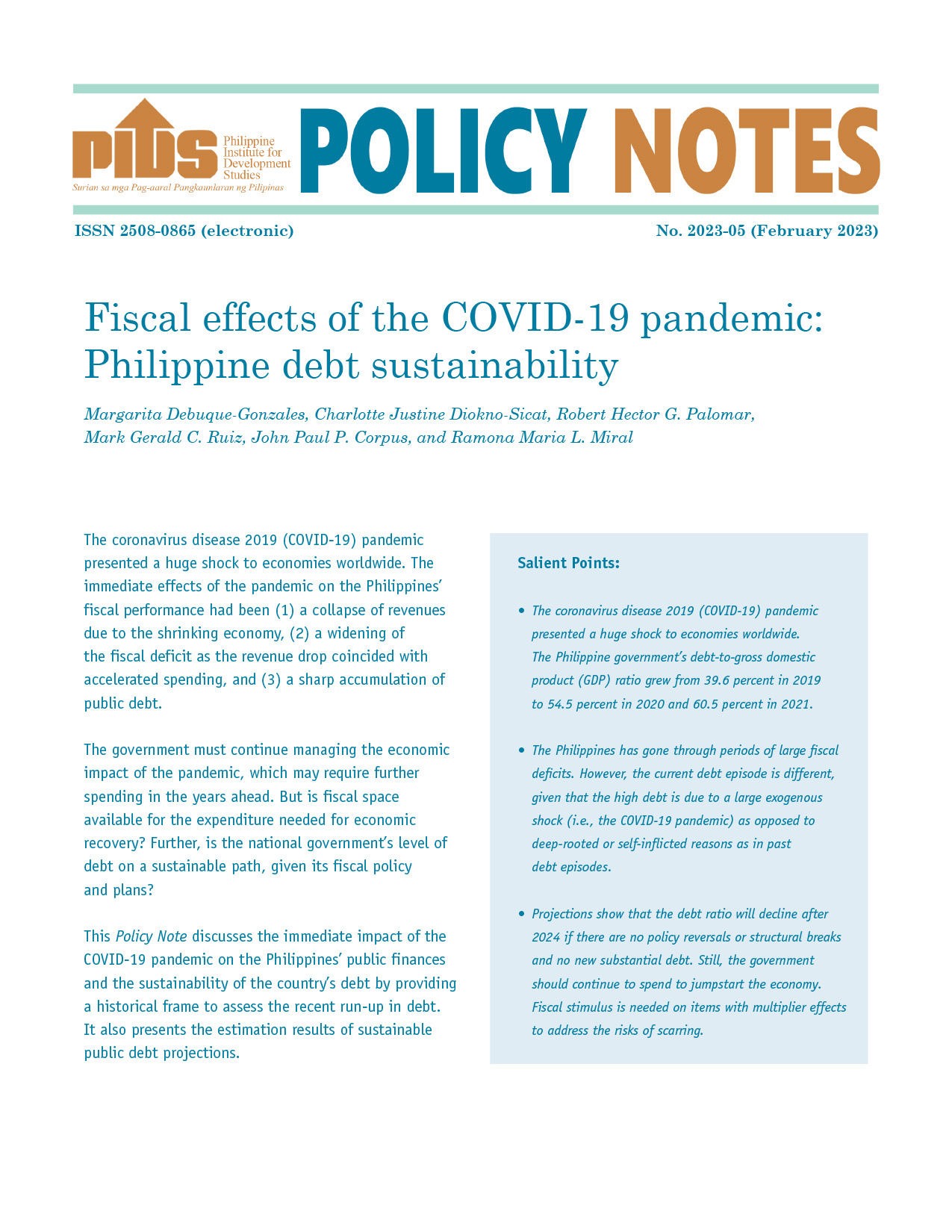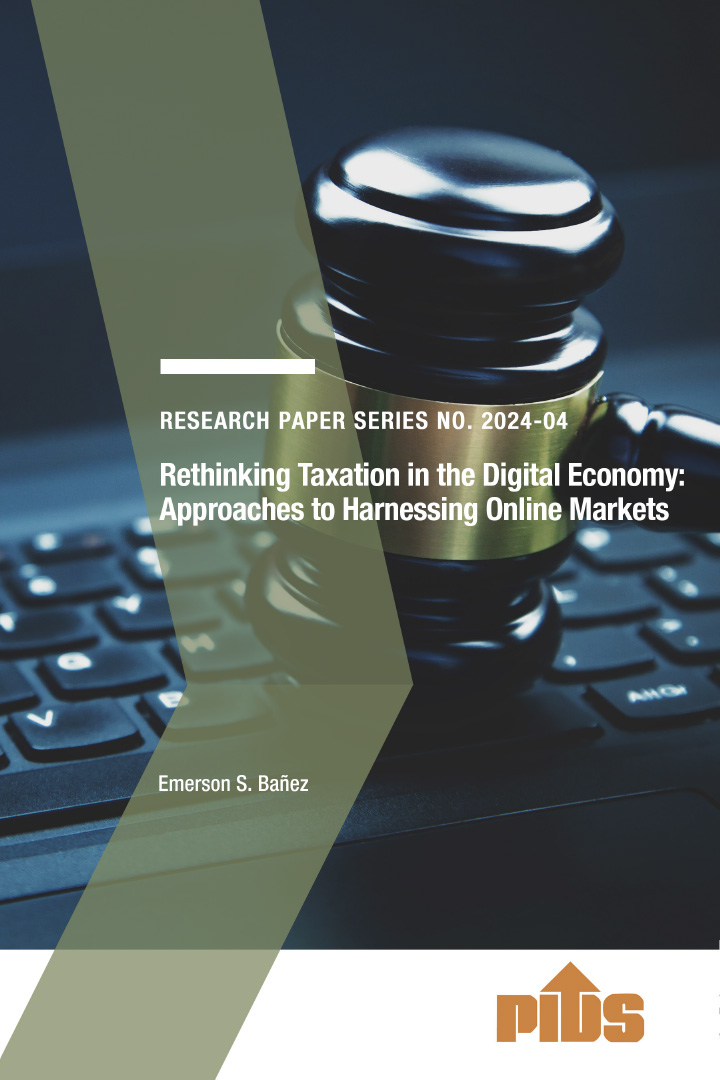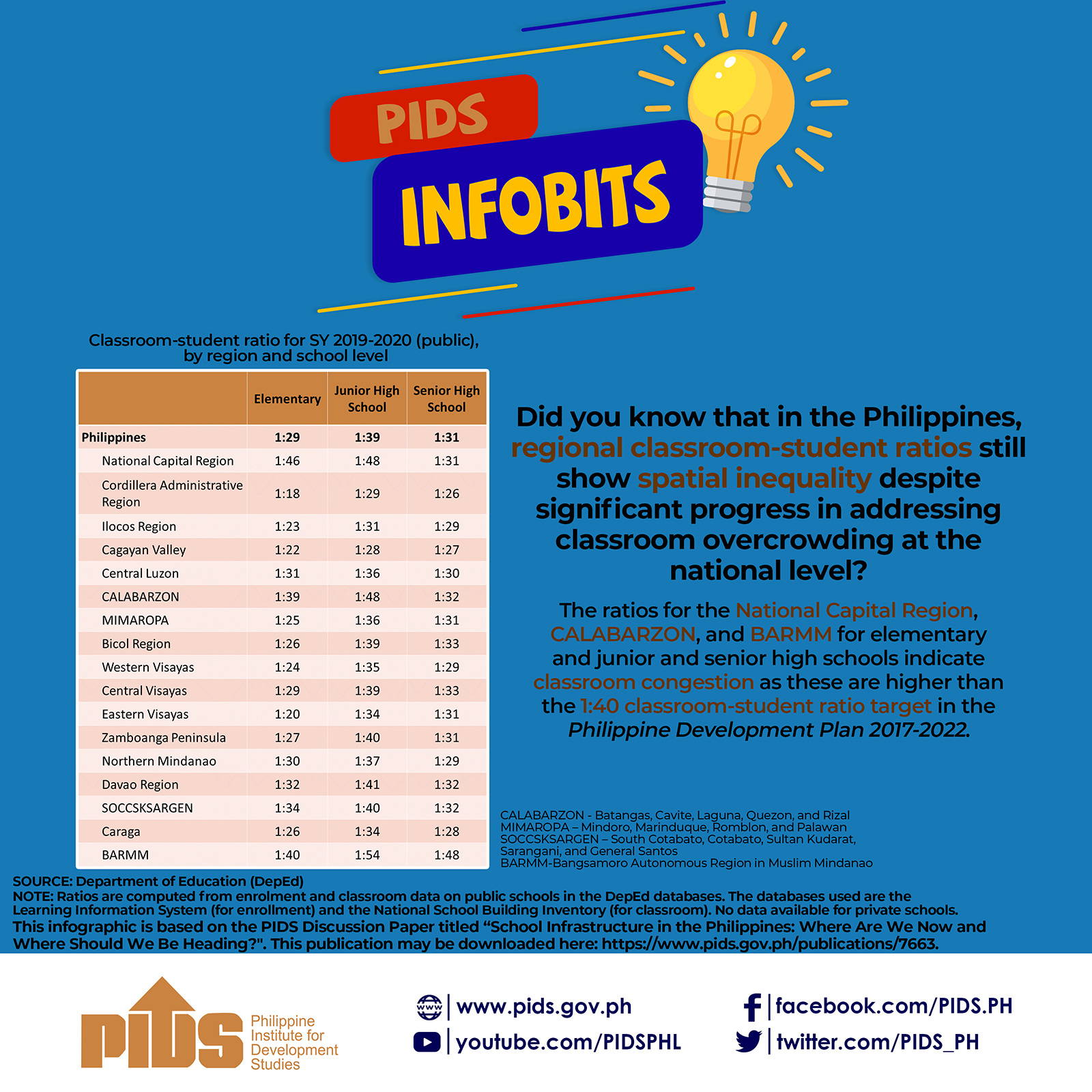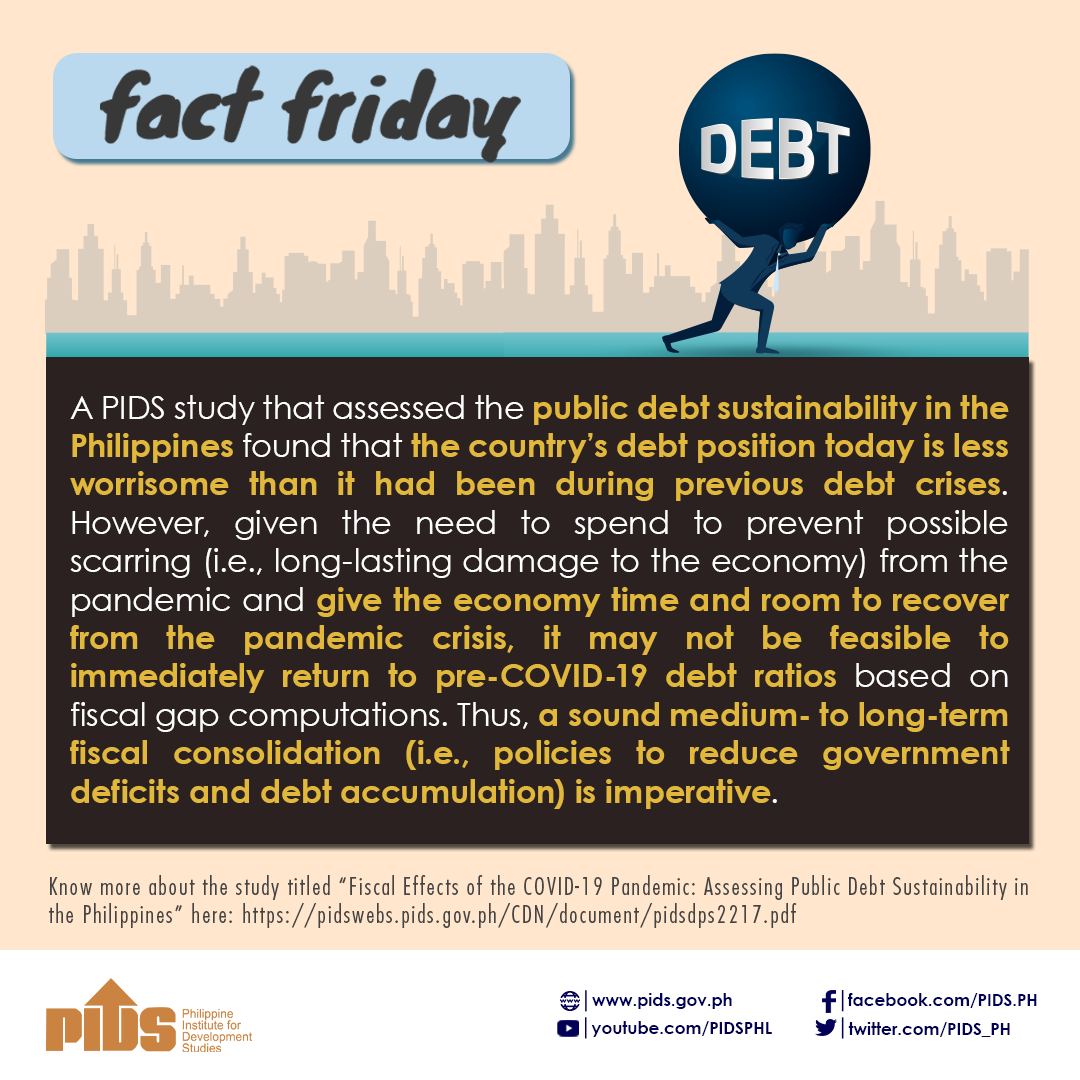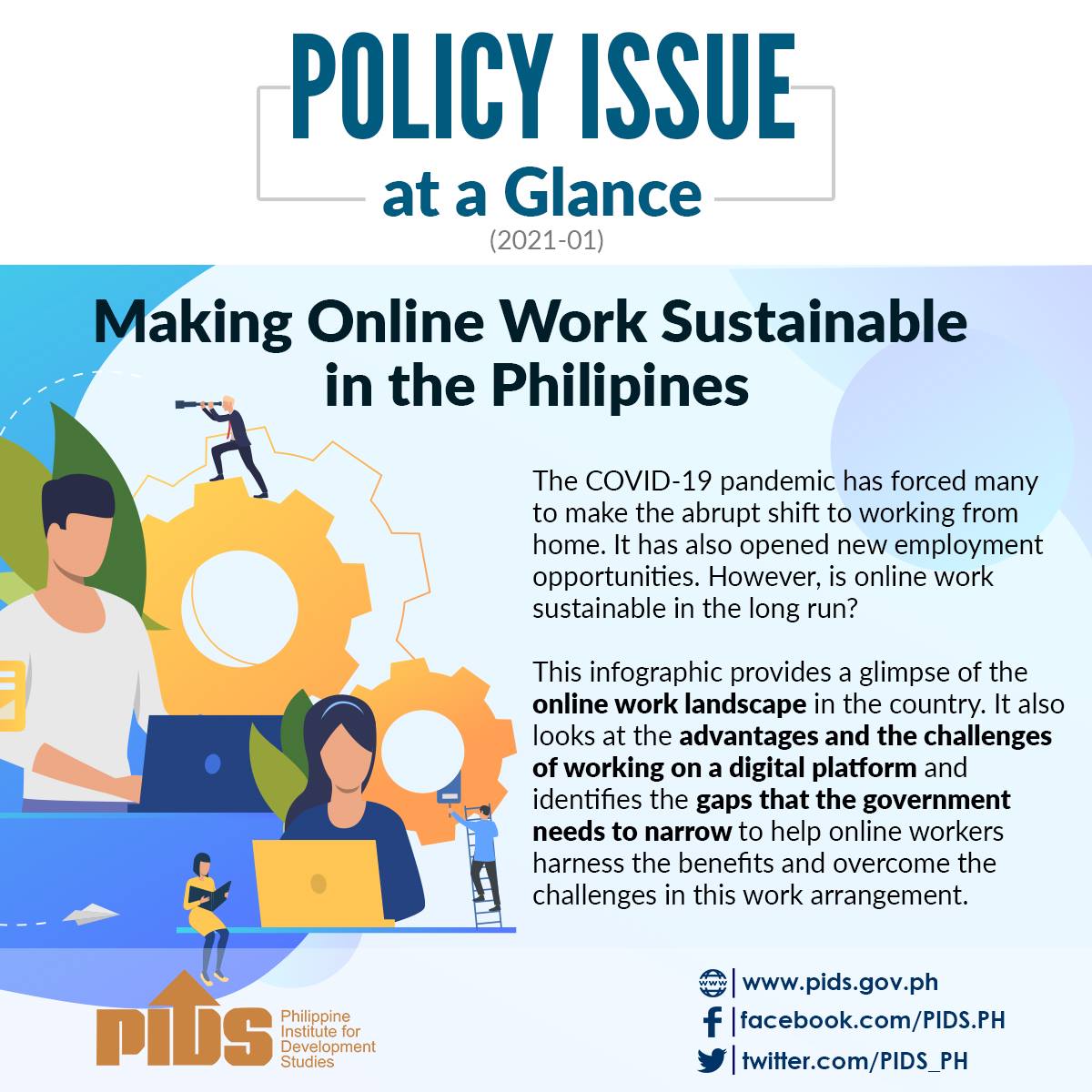The national government’s debt ratio will decline after 2024 if there are no policy reversals or structural breaks and no new substantial debt, according to a report released by the Philippine Institute for Development Studies (PIDS).
The study titled, Fiscal effects of the COVID-19 pandemic: Philippine debt sustainability, finds that the national government debt-to-GDP ratio may remain elevated in the medium term, peaking at 66.8 percent in 2024, then gradually declining to 66.4 percent in 2025, 66 percent in 2026 and 65.7 percent in 2027.
“So long as the national government does not acquire substantial new debt, it will gradually decline over the succeeding years as the GDP growth rate increases. If these hold true, the baseline scenario shows that the level of debt is still manageable and sustainable,” the report said.
The study said that since half of the accumulated debt during the height of the pandemic crisis is comprised of cash buffers built up in the event of a prolonged pandemic, the scope for a future debt decline is wide.
“Netting the government’s cash reserves, the debt-to-GDP ratio would follow a similar but much lower trajectory,” it said.
“The consensus view is that GDP growth will normalize to pre-pandemic levels by 2022, fiscal deficits will trend downwards and interest-growth differentials will remain negative (which will generate favorable conditions for debt reduction in the near to medium term),” the report added.
In moving forward, the study said there should be no policy reversals that compromise the revenue-raising capacity, unnecessarily increase the spending burden on the national government or negatively impact existing measures that led to the improvement of debt before the pandemic.
“There needs to be a consideration that debt recently increased because of the pandemic crisis and not because of any fundamental issues or problems with policies and institutions.
Debt will continue to decrease provided that the national government does not acquire substantial new debt, as would be the case if possible risks are not managed,” the report reiterated.
“The national and local governments should continue spending to jumpstart the economy. Fiscal stimulus is especially needed on items with large multiplier effects (i.e., infrastructure) and to address the risks of scarring (i.e., human capital investments),” it said.

